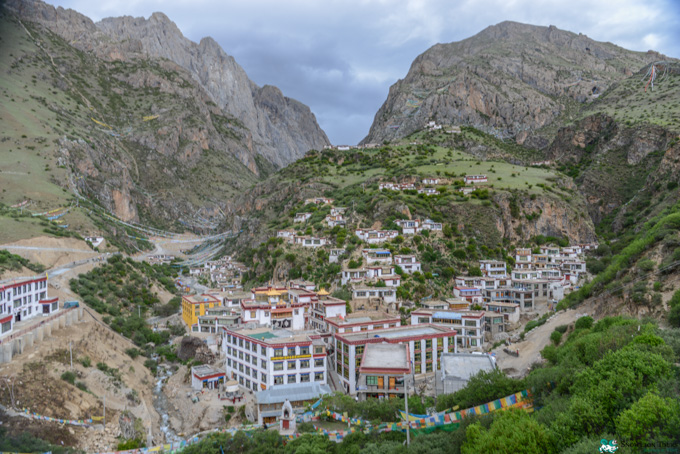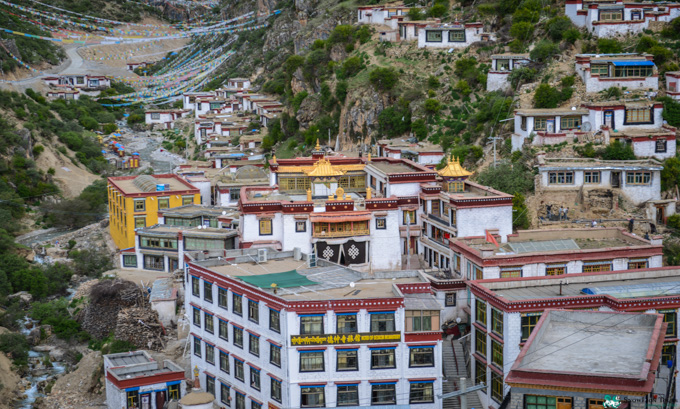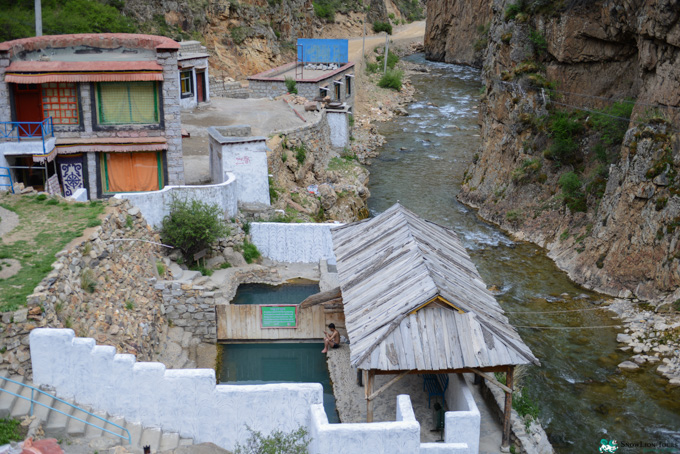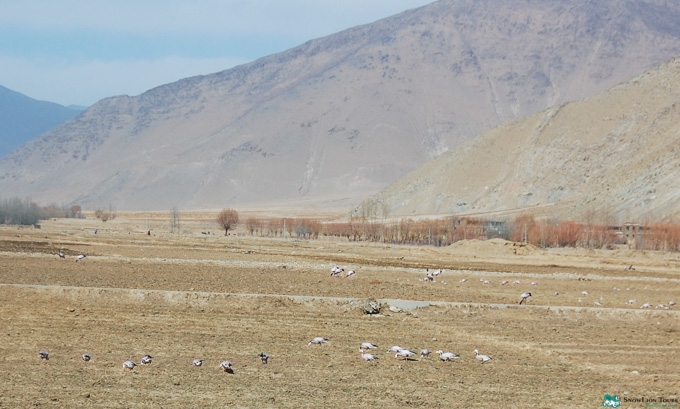Tedrum Nunnery also spelled as Tidrum Nunnery is a Tibetan nunnery close to the Drigung Til monastery, It is about 13 km northwest of the monastery. And about 110 km from Lhasa. Tidrum nunnery is located in a beautiful hill between two valleys with numerous hermitages and caves in the surrounding hills.

The overlooking of Tedrum nunnery.
The nunnery is small, but a home to hundred nuns. Pilgrims across Tibet and other places like China and Mongolia visit here at Tidrum for the famous hot springs. The nunnery sets at an unbelievably high elevation of 4350 meters above sea level. The nunnery has a connection and history linked with Guru Rinpoche or Padmasambhava, The thirty seventh King Trisong Detsen and his wife Yeshe Tsogyal, especially it associated with Yeshi Tsogyal. It is said that they found their way to Tidrum because she loved its beauty. Therefore they choose to meditated here for many years. The Khando la, the resident spiritual leader of Tidrum nunnery is considered a reincarnation of Yeshe Tsogyal. It is said that lot of scriptures and religious objects revealed in the caves above the nunnery. Which Padmasambhava concealed. The nunnery complex was re-constructed in the 11th. The nunnery complex survived the cultural revolution with little distractions. Starting from 1980s the nuns from Tidrum nunnery restored the small chapels in the complex. The Shambala Hotel located 10km away from Tidrum nunnery is a worth well accommodation to experience at a such a high altitude of Tibet. The water of the shower in each room directly from the Tidrum hotspring and the rooms are decorated with delicate Tibetan style. Tidrum nunnery also offers some of the stunning day hikes around the monastery. A day hike around the caves of Yeshe Tsogyal would be a special day spent at Tidrum nunnery.

The main temple of Tidrum nunnery
Hot spring
Tidrum Hot Spring is a normal hot water comes out of the springs as you can find it any where in Tibet, but the Tidrum hot spring has a long history of 1300 years. The water from the spring was not hot in the past, Guru Padmassambhava is said to have subdued the energetic problems of the place, so that the spring turned into a hot spring. From then on, the hot spring became a good place for people to bathe. There are 3 hot spring pool divided by a wooden bridge with the main section being about five meters wide. Water in the two pool is waist deep and has a temperature which remains at approximately 40 degrees Celsius all year round.

The hotspring pool view inside guesthouse in Tidrum.
Containing multiple types of minerals beneficial to the health of people such as sulfur, gypsum rubrum, tussilago and coal etc. Therefore, frequently bathing in the spring will benefit the treatment of visceral diseases like gastric ulcer, bone diseases like rheumatoid arthritis as well as skin diseases like scabies. Due to the mineral changes of the stratum, the water of Tidrum Hot Spring usually presented pale blue but showed white, yellow or red on the auspicious occasions. Springs of different colors varied in its medical values. Moreover, when the temperature is high enough, there will appear some medicine snakes, which have never hurt anyone for the past thousand years but instead increase the healing powers of the spring water. The medicine snake is a rare and unique type inhabited in the rock caves or heaps in the vicinity of plateau springs and can be seen in summer and also in winter.
If you are overnight in Tidrum nunnery, you can go to the guesthouse pool which has more privacy, but there is also the public one which shared with local pilgrims.

A flock of blacknecked crane on the way to Tidrum nunnery from Ganden.
The best way to travel to Tidrum nunnery and hotspring is take a two days tours from Lhasa and cover both Ganden Monastery and Drigung Til Monastery. If the time is correct, you may be able to see another rare wildlife – the black-necked crane which only existed on the Tibetan Plateau.





